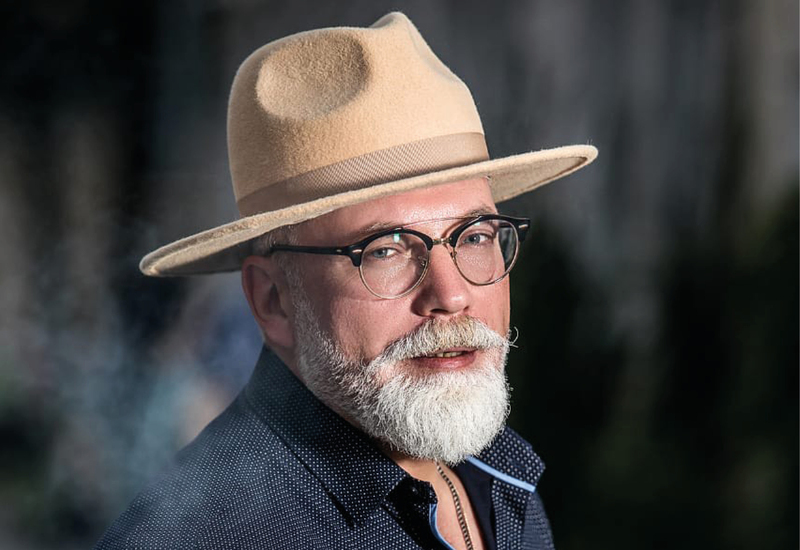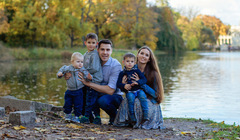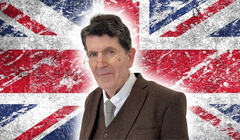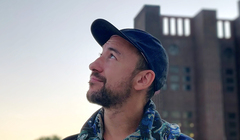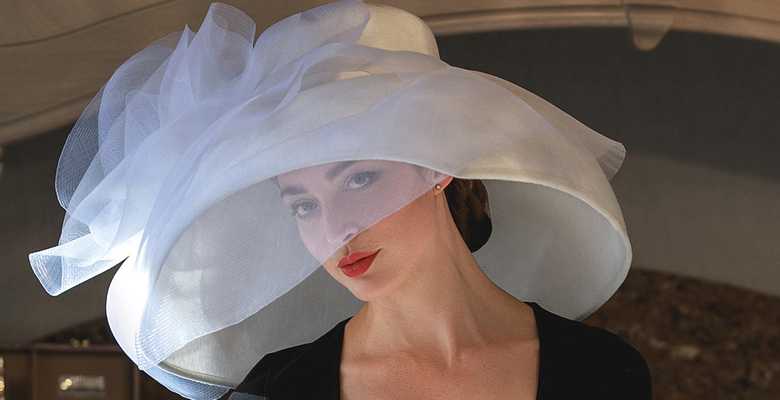
Are hats an obsolete anachronism or a valid contemporary means of self-expression? This question comes to mind when you come across photos of debonaire celebrities or royals elegantly sporting gorgeous and extravagant headwear at receptions and soirées. For an instant, they seem like time travellers, the heroes of historical novels who have somehow been transported to modern times. The amazing looks these accessories create so often make you want to follow the example of their wearers! However, this poses a great many questions. Where can we buy a beautiful hat? What’s better; to purchase a ready-made hat or have one sewn to order? To dispel the myths around this article of headwear and dive into its history and traditions, Kommersant UK talked to the etiquette expert Ksenia Markova, the hat designer Lia Gureeva and the English milliner Anna Gilder.

Etiquette expert Ksenia Markova
What gave rise to the current hat-wearing traditions?
The strength of each nation lies in its traditions. Headwear is an essential element of the national dress of many countries. (Incidentally, in Europe, all national dress is considered “white tie”, meaning it meets the highest bar of the dress code). Many types of hats have authentic ethno-geographical origins which is often reflected in names such as the Tyrolean hat and the fez. The current popularity of headwear is due to factors such as history, religious prescriptions, climatic conditions and many other peculiarities and nuances, such as the influence of the celebrities who people try to emulate; think of Jacqueline Kennedy’s little hat. Often, cinema has a tremendous influence. Popular films are quite capable of stimulating interest towards particular types of headgear. Examples include the fur skullcap worn by the hitman from Léon, the berets from Bonnie and Clyde, cowboy hats from Westerns, Nadya’s fur hat from the Irony of Fate or Elena Solovey’s turban-like headband in Slave of Love [these last two are classic Soviet comedies]. Older people give hats great importance as they still remember times when it was unacceptable to go outside bareheaded. Almost a quarter of a century ago, at the wedding ceremony of Prince Edward and Sophie, the Duchess of Edinburgh at Windsor Castle, the guests were asked not to put on hats, which was quite exceptional at the time. One lady, however, categorically refused to appear in public without headwear. This was Elizabeth the Queen Mother, who, with dignity, was resplendent in an elegant hat.

Name the most famous hat in history
When it comes to etiquette, I suppose the top hat is king. A relatively modern version of this was developed in 1797 by John Hetherington, the appearance of which on the streets of London caused quite a stir if not an all-out riot. In the end, this man’s love of standing out from the crowd led to humiliation and a fine. In the nineteenth century, two types of hats dominated; the bowler and the top hat (good shops stocked up to 30 different types of top hats for different occasions). The silk top hat, which was popularised by Queen Victoria’s husband, Prince Albert, was suitable for evening receptions, calling on guests, fashionable tea parties, weddings and church services. The top hat was also worn at the theatre, but there was an alternative; the gibus or opera hat, which was collapsible, allowing it to be placed under a seat at the theatre. As always in etiquette, awareness of the subtleties was crucial; people had to have a firm grasp of them. Although the top hat was used for official functions, the fashionable King Edward VII flouted all the rules of etiquette by wearing a bowler hat with evening dress. In the Victorian Era, a classic black and dark brown top hat could only be afforded by the fairly well-off. These top hats were made of beaver felt, which was extremely expensive and harmful to the health of the hat-makers as mercury was used to process them, and the hatter had to inhale the fumes. It’s known that exposure to mercury leads to sight loss, incoherent speech and mental illness. Poisoning from mercury fumes was a professional illness which was so widespread that it gave rise to the English expression ‘as mad as a hatter’. Unfortunately, Lewis Caroll didn’t invent this mad hatter, he just gave a colourful description of what was a well-known phenomenon at the time.

In what situations are hats inappropriate and wearing one would be considered bad manners?
Hats are a day-time accessory and morning dress, of which a hat is an indispensable part, should only be observed for occasions which end before six in the evening. For this reason, hats are now unnecessary at the theatre, as performances there usually take place in the evening. But even during matinee performances, a hat may block the view of other members of the audience, so it’s best to consider the size of your headwear and possibly forgo it altogether, as wearing it may be untactful.
Hats must be worn in season; those with floral decorations look somewhat awkward in winter, and it’s strange to go for a walk in a warm or heavy hat in summer. Many etiquette specialists consider that the summer hat season begins after Easter and continues until September 15. ‘The fifteenth falls on Tuesday next and after that mystic notch in the calendar has been passed men may continue to wear straw hats at their peril’ was the recommendation of the New York Times in 1925. In those times, newspapers often published articles and explanations of the need to change your wardrobe before the start of the new season and warning of the unpleasantness which could be caused by ignoring these forms of etiquette. When Bram Stoker’s Count Dracula walked around an autumnal London in a straw hat, he couldn’t have passed by unnoticed as his appearance was simply screaming out that there was something wrong with him.

Lia Gureeva, headwear designer
In which countries is the culture of wearing hats most developed?
If we’re talking about high-status hats at public events, then I’d say England. If we have in mind a place where hats are worn as a part of everyday life, then I’d say Russia.
What models and styles of hats are popular this year?
The boater type of hat with straight, broad brims. Also classic models of fedora. This is a men’s fashion which has long had a place in women’s wardrobes. Currently wearing various different types of headwear is popular, including headscarves and berets.

How should a hat be chosen?
You need to take into account your face type and bodily proportions and also make sure that it fits into your wardrobe. It’s not about fashion, the main thing is for the hat to effortlessly blend into your look and accentuate your individuality.

Who should never wear a hat? They say it depends on face type.
I believe that anyone can wear a hat, the main thing is to respect proportions. There’s now a huge range of options; you can choose a ready-made hat or have one made to order, taking into account the individual features of your face and figure. The creations of independent hatmakers are tailored to your individual features, but, when selecting an off-the-peg headpiece, special rules apply; the crown must be broader than the face, otherwise, it will increase the visual volume and emphasise the curvature of the facial oval. This is especially true for ladies with round faces. I recommend choosing hats which are a little wider than the face. Many believe that hats with wide brims don’t suit short people, but this is only true if the brims are horizontal. If the large brim is diagonal and asymmetrical, then the hat will look impressive on the head of a diminutive lady.
Do people buy ready-made hats more often, or do they usually have them sewn to order?
Ready-made hats are more often acquired by first-time buyers, as it allows them to try them out and appraise their style and colour. People who have already bought a hat of a particular kind, prefer to have new ones sewn to order because they know that a hat sewn to individual specifications will sit better on the head.

Anna Gilder, milliner (hat-maker)
What are some cult hats from British history?
I’d select two men’s hats, the top hat and the boater, which is a straw hat with a flat bottom and a small brim. They have been fashionable for centuries now. Some examples of iconic headwear would include Princess Diana’s hat in the shape of a turban with a wide brim and, of course, the memorable hats of Queen Elizabeth. Her wardrobe is a guide to the evolution of fashions in hats, from the large brims of the 1940s to the pillbox hats of the 50s and 60s which were succeeded by the turbans of the 60s and 70s, which later gave way to a fashion for higher hats with broader brims.
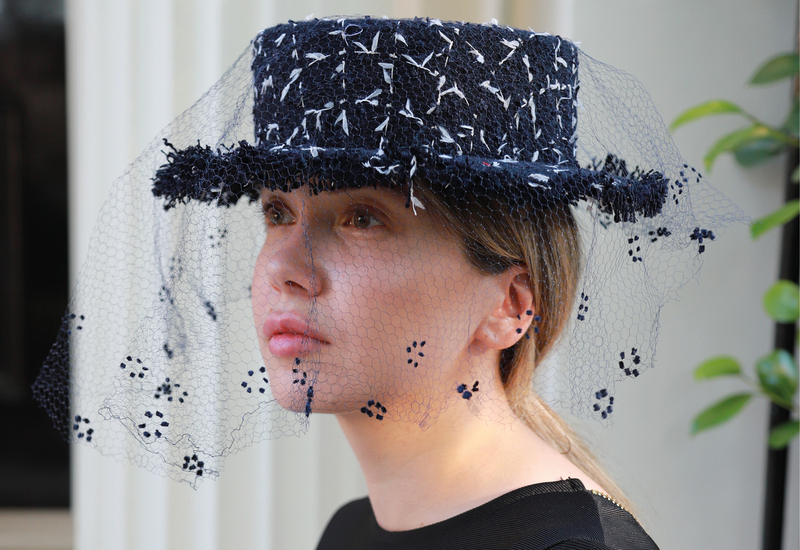
What different models of hats are there, from the simple to the ultra-fashionable?
There are classic hats for everyday use, such as the trilby (one of the varieties of soft men’s hats), the fedora, a hat with a flexible brim at least five centimetres in length and the boater, a hat with a wide brim. Another in this category is the pillbox, there are two kinds of these, small ones and larger ones which are worn on the crown of the head and fastened from behind, that model has been very popular for the last two years. The Juliet cap, a model from the 1940s, is once again in fashion, this is a type of skullcap without a firm base, which lies directly on the head. Fascinators, which are mounted on hair bands, are an ultramodern article of headwear, to which any decor can be fastened.
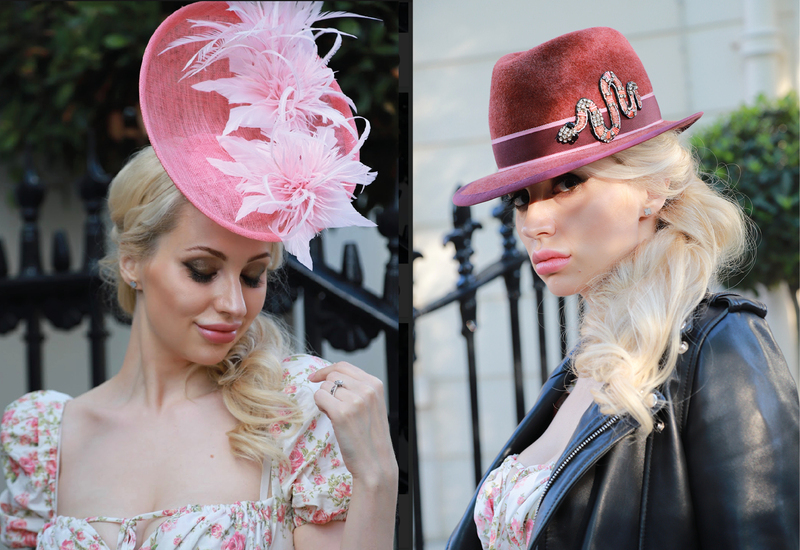
What rules should guide us when choosing a hat for a special event?
First of all, you need to settle on an outfit, because it’s easier to choose a hat for an outfit than the other way round. Secondly, when choosing a style, it’s important to take into account your face type and physique. For example, women of diminutive stature are better to choose either smaller but higher hats, as these help the woman to make more visual impression or fascinators. Thirdly, the hat must fit the dress code of the event.
Could you give some examples of colours which are appropriate for official functions and which are more suitable for social gatherings?
In my view, there are no rules about this; any colour can be made to be either beautiful or vulgar. The outfit also plays an important role; no hat can save a tacky dress. Of course, funeral attendance is strictly in black. In England, hats are traditionally worn to weddings, and, during the summer season, either subdued pastel colours or, conversely, bright, bold tones will look great. As a rule, older women choose hats with broad brims, and sometimes headpieces with large, but not very high bases, while younger women prefer fascinators.
These days, do people usually buy ready-made hats or do they tend to have them sewn to order?
It’s mostly overseas clients who purchase ready-made articles, simply because they can’t come in person. The majority of local clients still prefer to either have hats made to order or to rent them. Renting is a popular trend which appeared two years ago. This is because unusual new hats are memorable; they can be worn a second time, but it won’t have the same effect. Even the Royal Ascot has introduced styles for various enclosures and budgets in its style guide this year, including options for mass-market, designer clothing, and rentals. These days, you can rent any outfit at all the main department stores. As a rule, the cost of rental is 10% of the cost of the article. For example, a £500 dress can be rented for £50. Renting a hat works out more expensive, at anything from 30 to 50% of the cost of the headwear. I have also been offering this service to my clients since last year. Another fashion trend which appeared relatively recently is purchasing vintage hats. These hats were predominantly made by hand, so they are original and very often unique, which means the risk of meeting another lady in the same hat at a function is minimal. They can be acquired at vintage shops, at markets, (on Portobello Road and elsewhere) and at the fairs which take place weekly in different parts of Lonon and across all of England. It’s also possible to buy them online, a wide selection of hats can be found on Etsy and in the Vinted application.
How should a workshop be chosen?
I recommend finding local hat-makers on the internet and looking at their work, either on their sites or on social media, to work out which artisan is closest to your style. This is because, first of all, each craftsman has their own style, and secondly, none of them will copy anybody else’s style. After this, go to their shop, try on some hats and discuss the look with the craftsman, because sometimes, many people, especially novices, don’t know what hat they’d like to order.
What colours and materials are fashionable this year?
While last year bright saturated colours were in fashion, such as yellow fuschia and green, this season the palette is in pastels, including mint and pink. There aren’t so many new materials, it’s felt in the autumn and in the summer, straw, materials resembling straw made of recycled paper and sinamay, a netting made of banana leaves which is only produced in Indonesia. A novel material is thermoplastic.
Where in Britain is it best to acquire a hat?
In England, a ready-made hat can be bought at Marks & Spencer or John Lewis, they have many ordinary basic hats. More expensive models are on sale in Harrods, Selfridges & Co and Peter Jones.
Which are the most popular brands of ready-made hats?
Philip Treacy’s; he’s the god of the hat design world, he has made hats for Alexander McQueen’s collections and all the members of the royal family; his hats are worn at the most renowned and prestigious events. Stephen Jones is the official hat-maker to the Dior brand. He has also made many hats for members of the royal family, including Meghan Markle, as well as for celebrities. Jill Biden, the wife of the American president, attended the coronation in a fascinator of his creation.
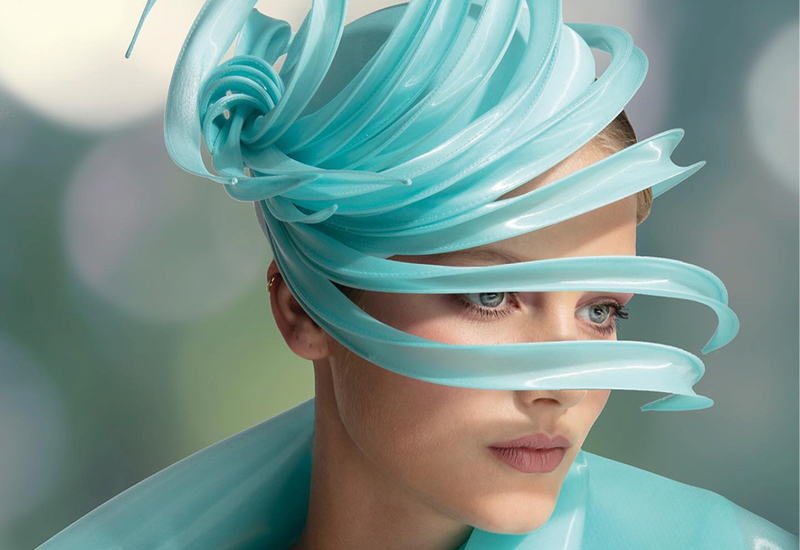
How much should we expect to pay when buying a hat?
Prices for mass-market hats begin at £50, and £20 for fascinators. On average, bespoke headwear will set you back from £100 to £500, but the price of the materials plays a key role in this, and they have recently become markedly more expensive, which has led to an increase in the cost price of the articles. The price of mass-market hats from the top brands may be £2,000 for a Philip Treacy hat, or in more expensive collections, they may start at £5,000.
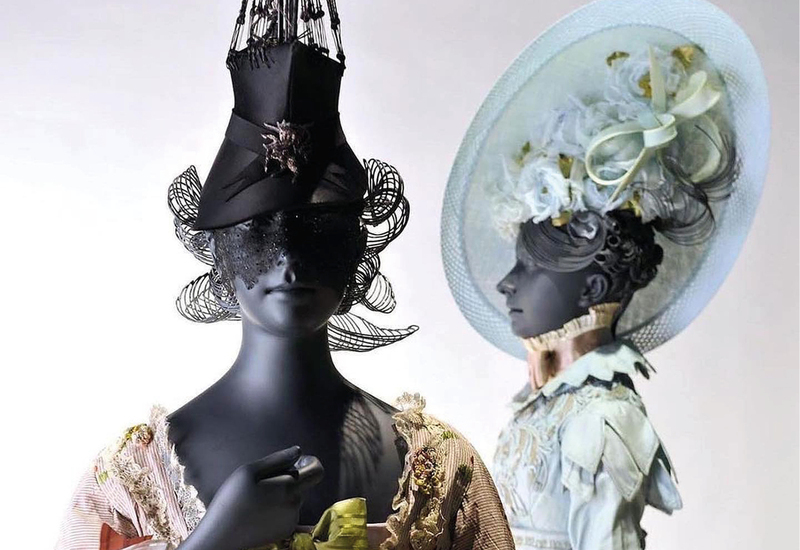
How should a hat be worn?
A hat should be worn on the right, as etiquette dictates that the gentleman accompanying the lady should walk to her left. However, many people don't know this, which often leads to confusion. For example, when Meghan Markle came to Britain, she was using the services of American stylists, and in the US, there is no tradition or culture of wearing hats. On her first appearances, her hats were either on back to front or on the wrong side.
Which British celebrities are best at wearing hats?
For me, the Queen was number one. Now, it’s Kate Middleton; her hats are not too ostentatious, they are restrained and beautiful and always appropriately selected. She doesn’t try to get into the tabloids with crazy hats. I’d call her an ambassador of the hat industry as she wears the work of different designers, from the creations of the renowned Philip Treacy to headwear from fledgling or unknown designers, such as Jane Taylor, who became famous thanks to her. Young people copy her style. The Princess of Wales has started to go to public events wearing hired dresses, which has helped to popularise the trend. Queen Camilla also does very well, although she only wears classic models from Philip Treacy, they are always beautiful. Princess Zara Phillips is not afraid to experiment with colour. Princesses Eugenie and Beatrice of York like slightly crazy hats. They get criticised for them in the press, but I like them. Sophie, the Duchess of Wessex, also always appears in beautiful and elegant hats. The TV presenter Charlotte Hawkins is very stylish. She often hosts horse-racing coverage in unusual headpieces, while the presenter Francesca Cumani has a unique look, she often wears vintage clothes and hats.
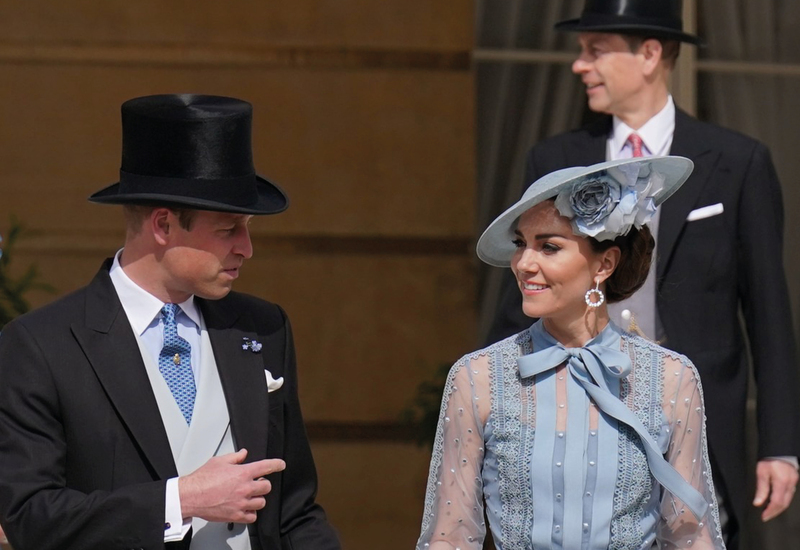
The ending of dress codes at public events means that hats are no longer compulsory. How do you feel about that?
So far the dress code has only been completely cancelled at the Cheltenham races, which happen in March. Traditionally, spectators wear tweed and felt hats. This year, a fortnight before the event, the organisers announced the cancellation of the dress code, advising people to simply ‘Wear your best’. This announcement caused some consternation amongst race-goers. After all, you can wear everyday clothes everywhere, but on some occasions, it’s good to dress up… so everyone put on their finery as usual, completely ignoring the fact the dress code had been cancelled. Royal Ascot hasn’t followed Cheltenham’s lead, however, on the contrary, in their invitation they recommend wearing a hat, the only thing is that they are not compulsory in all the enclosures, of which there are four; the Royal Enclosure, where the bases of hats must be at least ten centimetres and men must wear top hats and the Queen Anne Enclosure where ladies must wear hats or fascinators. There are also the Village Enclosure and the Windsor Enclosure. But whatever enclosure they are in, all the ladies wear headwear because they want to draw attention to themselves. Hats are also obligatory at the Henley Royal Regatta. Here, traditionally, canotier style boaters are worn, as sported by the gondoliers of Venice. Both men and women wear them. Originally they were straw and only for men. Boaters in a nautical style are popular.
How have changes in dress codes affected the hat-making business and the demand for headwear?
So far, not at all, as ladies still want to dress up and the royals, who attend all the traditional public events, support the fashion of wearing classic clothes and hats. But the potential cancellation of dress codes may harm the industry as a whole and small businesses such as my own.
